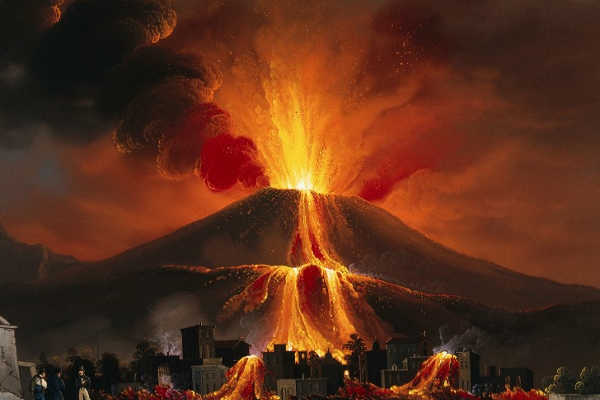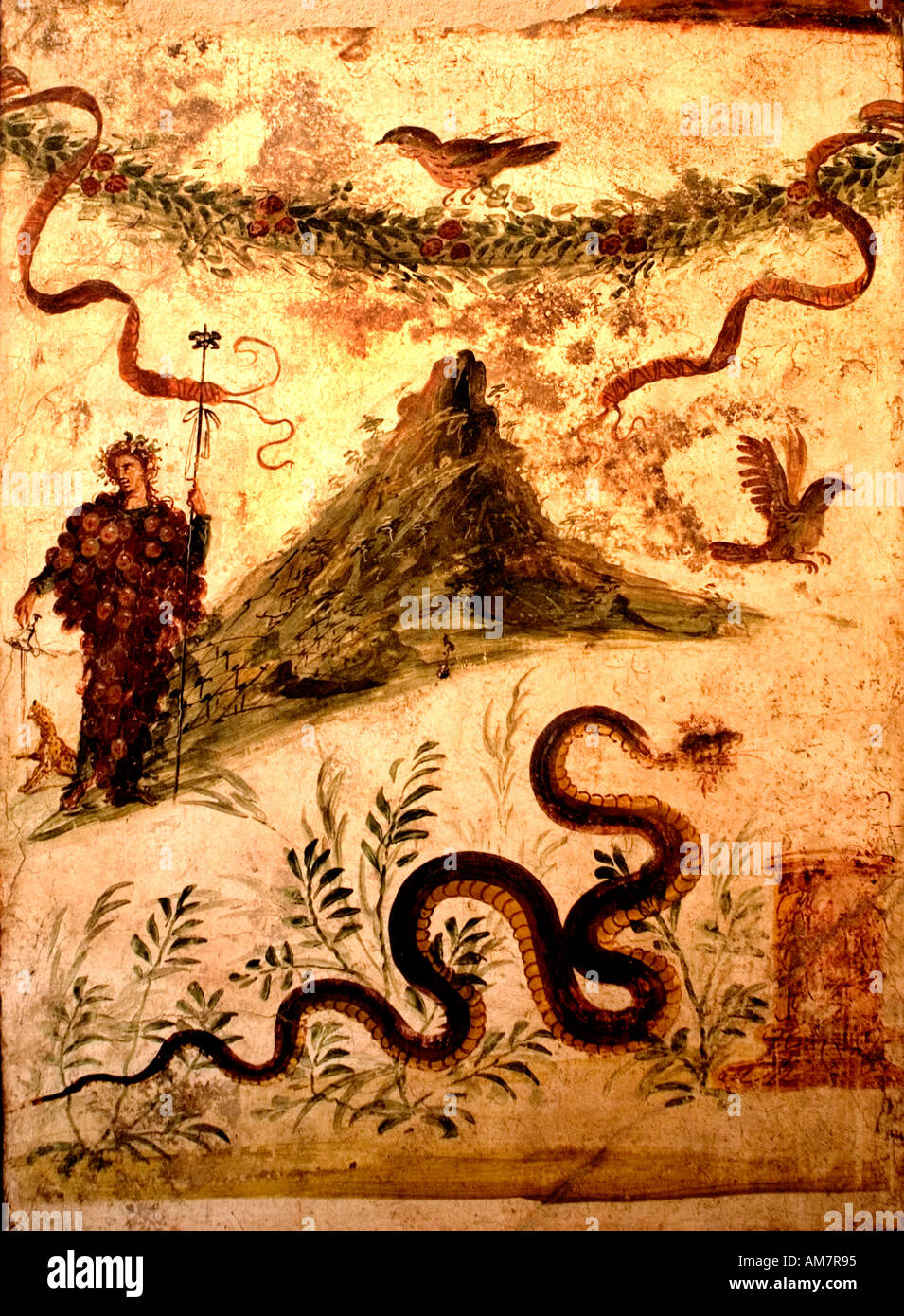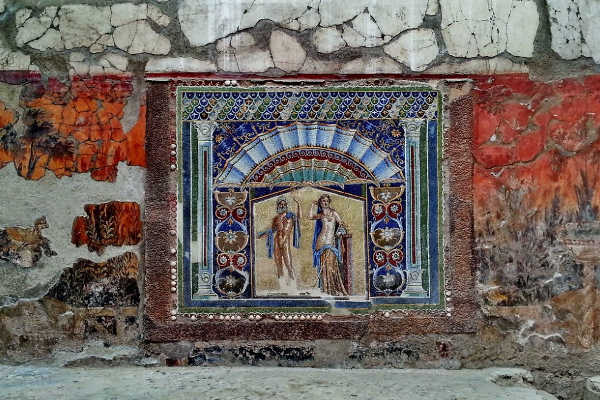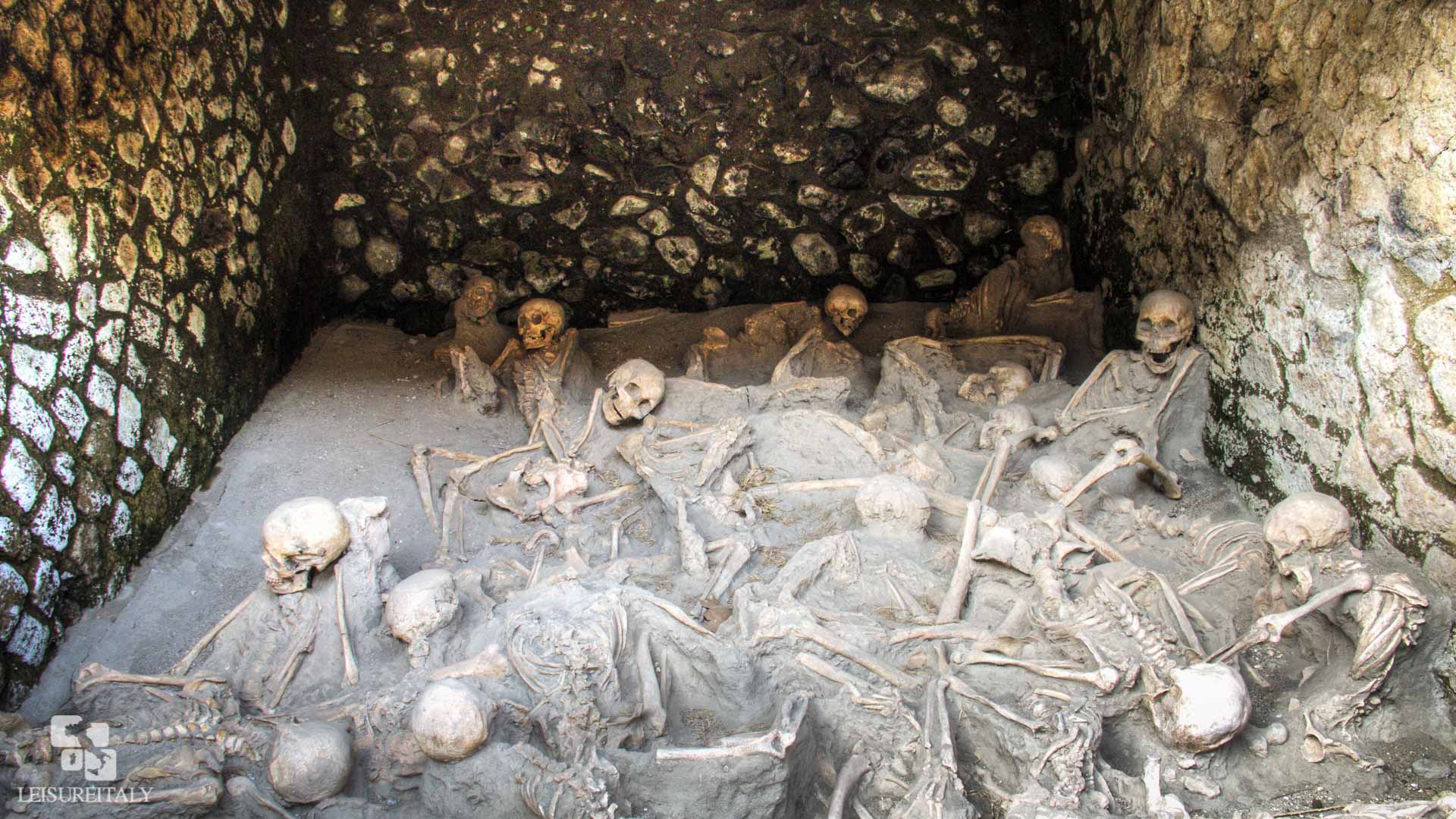These two ancient cities fell on the same day almost 2,000 years ago. They were both buried by the eruption of Mount Vesuvius, they were both discovered well over 1,500 years later and they are now both popular Italian tourist destinations. But these two cities are not the same, either in their history or in the way the volcano destroyed them. Here we will explore some of the major differences between Herculaneum and Pompeii.

The day of the fateful eruption
Pompeii and Herculaneum experienced the eruption of 79 AD in very different ways. This led to varying degrees of preservation and a vast difference in the numbers of survivors.
There were two main stages in the eruption of Mount Vesuvius. In the first phase, a huge column of volcanic ash, gas, and rock shot high into the air and then began to rain down from the sky. Because the wind was blowing in a south-easterly direction, this rain of pumice rocks fell over the town of Pompeii, injuring the inhabitants, trapping them in buildings and causing other buildings to collapse. Herculaneum survived this phase, potentially allowing many residents to escape before the more destructive second stage of eruption.

The second stage featured pyroclastic flows, fast-flowing rivers of gas and ash that cascade down the side of the volcano with intense speed and ferocity. These flows buried Pompeii under 4-6m of ash and covered Herculaneum in roughly 25m of ash.
The discovery of Pompeii and Herculaneum
First, we should mention that the depth of the volcanic debris covering the two cities played a major part in how they were discovered and excavated. Mount Vesuvius covered Herculaneum in roughly 5 times the amount of ash that Pompeii was and as you can imagine, this made the conditions of its discovery very different!

In 1599, architect Domenico Fontana discovered Pompeii, however, he covered up the remains. Historians believe that what he discovered were the erotic frescoes from the ancient brothels and, finding these shocking, he re-buried them. Pompeii was rediscovered in 1748 and excavations have been taking place ever since.
In 1709, Prince D’Elbeuf uncovered the city of Herculaneum while he was digging above the site of the theatre. Despite the discovery, excavations in Herculaneum didn’t begin until 100 years after those in Pompeii because it was more difficult.
The buildings that survived

When you visit the sites of Pompeii and Herculaneum, you may think the buildings look similar; both sites have buildings with columns and arches, and the streets appear similar too. But there are some big differences.
First, none of the buildings of Pompeii have surviving upper levels. When the volcano first began to erupt, it showered Pompeii with pumice and this obliterated many of the upper levels of the building, leaving only their lower walls.
Second, the buildings in Herculaneum are far better preserved. Even today, the frescoes on the walls display vibrant colours and the mosaics gleam as though freshly tiled. The city lived near to Mount Vesuvius, and the 25m deep layer of volcanic ash that fell vacuum sealed the city, ensuring spectacular preservation.
The surviving artefacts
Those excavating the ruins have uncovered a vast array of artefacts from both sites. Pots, jewellery, coins, and artwork were all found in Herculaneum and Pompeii but one of the most unique finds in Herculaneum was the paper. That’s right, paper survived a volcanic eruption!
One of the most impressive buildings found in Herculaneum was the Villa of the Papyri, so-called because of the roughly 1,800 scrolls that were discovered there. In 1750, well diggers found sections of an impressive Roman Villa. Under the supervision of Karl Weber, tunnelling operations began, and the villa’s layout and treasures were slowly revealed. When they reached the library, they realised that many of the charred items inside were paper scrolls. Unfortunately, the scroll’s carbonised forms revealed that many of the rocks that had been removed up until this point were carbonised books!

Using advanced computerised techniques developed by NASA, archaeologists have since been able to reveal much of what was written on the paper. The scrolls contain Roman poetry and records and, perhaps most impressively, half of the works of the ancient Greek philosopher, Epicurus.
The human victims
If you’ve visited the sites of Pompeii and Herculaneum, then you will have noticed a difference in the remains of the victims. Pompeii displays plasters casts whereas Herculaneum has over 300 skeletons. The reason for this comes back to the ways in which the cities experienced the eruption.
In Pompeii, ash and rock showered over the citizens, encasing them instantaneously and preserving their forms in the debris. As the bodies decayed, they left their imprints in the ash, which archaeologists would later discover.

In Herculaneum, archaeologists believed that all the residents escaped because they avoided the initial volcanic rain. However, in 1981, numerous skeletons were discovered by the ancient seashore in arched, brick boathouses. Their scorched remains showed that they, unlike the citizens of Pompeii, had been incinerated in the pyroclastic flows and not killed by falling debris. Exposed to unbelievable temperatures, their bodies were instantly vaporised, leaving their skeletons where they fell.
The other towns around Mount Vesuvius
With the huge fame of Pompeii and Herculaneum, many other destroyed towns often get forgotten. Oplontis and Stabiae, for example, offer further insights into how the eruption affected inhabitants. They were affected in different ways to Pompeii and Herculaneum and since they were further away from the volcano, there were more survivors left to tell their stories.

Archaeologists may yet discover more differences between Herculaneum and Pompeii – or more similarities. With so much of each city remaining underground, who knows what secrets of the past have yet to be shared.